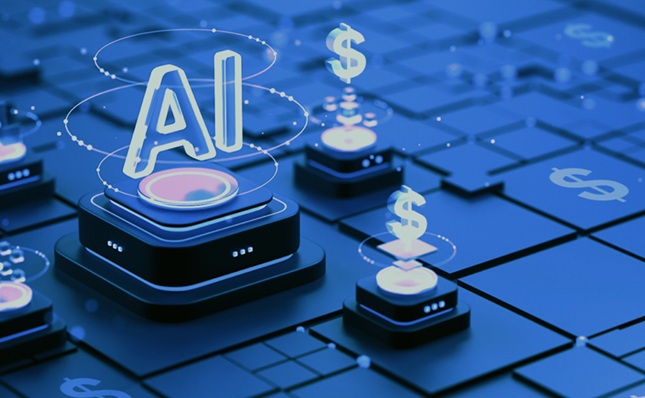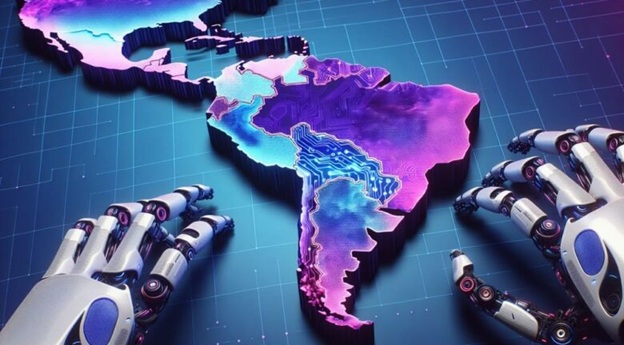The AI Investment Fever: Yes, but No
especiales

Sam Altman, CEO of OpenAI, is positioned today in a curious duality: he is the main architect of the ChatGPT boom, and at the same time, he is among the first to warn about the risks of the current AI investment frenzy.
At a recent dinner with journalists in San Francisco, he shared a reflection that is already resonating strongly: "Are we in a phase where investors, in general, are over-enthusiastic about AI? My opinion is yes. Is AI the most important thing that has happened in a long time? My opinion is also yes."

The first of his statements has an air of alarm and seems to be opening the way to a debate about the sustainability of the current enthusiasm for investing in AI.
Altman refers to the phenomenon of bubbles, those historical junctures in which "intelligent people get overly excited about a shred of truth," as happened during the dot-com bubble, also known as the internet bubble, which was a speculative frenzy surrounding internet-based companies in the late 1990s.

Altman's words resonate in a context where signs of adjustment are already evident in the stock markets: in recent weeks, stocks linked to the technology sector such as Palantir have fallen by nearly 10%, and Nvidia, by around 3%.
And along with the above, it's worth highlighting with a clearly marked scoreboard that 95% of companies investing in generative AI have yet to record any financial returns.
This sense of urgency, of racing to avoid being left out, is generating massive investments without the necessary foundations, as well as inflated valuations. That is, companies with few employees and no real revenue that reach valuations in the hundreds or billions of dollars.

The competitive rush is also leading large companies to incorporate AI tools at an accelerated pace, more to demonstrate that they're "on top of the game" than out of necessity or a solid strategic plan.
And, as happened with the dot-coms, this excess capital in unviable projects can lead to a sharp adjustment, that is, a "bubble."
A New York Magazine analysis of Silicon Valley describes how many venture capital funds are injecting money into AI for fear of missing out on the next "Microsoft" or "Google" if they don't jump on the bandwagon in time.
However, there’s no unanimity around this negative view. Experts like former Google CEO Eric Schmidt counter that this isn't necessarily a bubble, but rather the beginning of a new industrial architecture, supported by solid infrastructure and a tangible demand for hardware to fuel AI development.

Undoubtedly, the financial landscape surrounding AI reflects tensions. The anxiety of investors, companies, and even governments about not participating in the artificial intelligence revolution and being left behind (the "AI FOMO" (fear of missing out)) has driven investment in startups without solid products and few employees, an aspect that Altman criticized as "irrational."
New Bubble
Unlike purely speculative bubbles, this AI bubble appears in a landscape where powerful networks of data centers, GPUs, and infrastructure exist and continue to be built, whose operability is undeniable and transcends the cult of "the viral."
All this infrastructure would persist even if there is a correction, a price adjustment in the stock markets, as happened with fiber optics after the dot-com boom.
Today, just as in 2000 with the dot-com bubble, the influence of a few AI-linked technology companies is so great that the market depends disproportionately on them. And if a drop in value were to occur, the impact would be enormous because these companies are now an irreplaceable pillar of economy.

Although, of course, the contrast between the performance of large companies and emerging ones cannot be overlooked. Although some of these startups may be overvalued, giants like Google, Microsoft, and Meta already integrate AI deeply into their business models, giving them resilience in the face of a possible slowdown.
There seems to be a certain dissonance between real technological progress and the viability of the investments associated with it, which entails a call for caution, as Altman made.
The comparison the CEO himself made with the dot-com bubble reflects both the revolutionary potential of AI and the dangers of investing in mirages. Although the scenario has not collapsed as it did in 2000, and where AI is mentioned, the eyes always shine with lights of optimism and the future, there are clear signs that certain speculative currents are fueling a dangerous overheating of investments in this field.
Digital Colonialism
The wave of investments in generative artificial intelligence is reshaping the global economy, but its impact on regions such as Latin America and the Caribbean poses profound contrasts.
In this regard, structural gaps and technological dependence stand out, to the point that only 67% of the Latin American population has access to high-speed internet, an undeniable barrier to implementing generative AI (AgAI) solutions, which require bandwidth and computing power.
92% of the AgAI tools used in the region are developed by foreign companies (OpenAI, Google, Meta), perpetuating dependence and capital flight.

Also striking is what some have called Data Colonialism, which translates into new forms of dependence, even in the area of language, the 89% of the data used to train Spanish language models comes from Latin America, but only 3% of the profits from these tools are reinvested in the region.
Furthermore, a single GPT-5 training session consumes energy equivalent to the annual energy consumption of 1,200 Latin American homes, exacerbating the climate crisis in the region.
The development of Ag AI in the Global South is not a technical problem, but a political battleground where the possibility of alternative civilizational models is at stake.
While the North speaks of "alignment of values," the South demands historical reparations for centuries of extractivism that are now being digitized.
If previously this extractivism focused on the intensive exploitation of non-renewable natural resources (oil, minerals, biodiversity, etc.), now it’s also a digital extractivism whose "dark object of desire" is personal data, ancestral knowledge, and a whole cognitive capital generated by users who never see their contributions translated into economic benefits and are instead mercilessly digitally plundered.

A single, paradigmatic example could make the point even more evident: the use of recordings in Quechua/Guarani to improve machine translators, without benefiting indigenous communities.
Thus, while Sam Altman warns of a possible new bubble, this time related to AI, in the stock market, on the side of the world favored by less developed nations, colonial patterns are perpetuated, now in new forms: where silver and rubber were once extracted, linguistic patterns, cultural heritage, and countless data sources are now exploited, feeding the vast belly of AI and its main and largest owners.
Translated by Amilkal Labañino / CubaSí Translation Staff














Add new comment